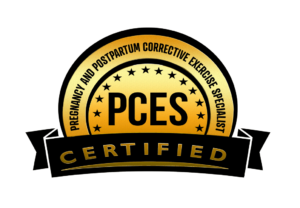Getting patients to 100% is important for long term health and injury. Stopping at 80 or even 90% success usually sets the person up for a failure in the future. Why? Because you didn't figure out the limitation that kept them from getting to 100%!!!
Has your diastasis closure stalled? Are your abs not what they used to be but you are just thinking this is part of being a mom now? Abdominal separation and its subsequent coming back together has to do with how your body connects and works together. I find patients can get down to somewhat closed (closed by medical standards) but still lack some of the key connectivity to bring their abs completely together when under a load.
By all standards 2 fingers or less is fixed, but not always for me with my patients. If a patient doesn't feel firm enough in the middle or if they separate more when they load, this is not good enough. If it's 2 fingers and very firm under the middle of their abs, drawing together and pushing out my fingers when loaded, then I'm happy.
Yes, I progressively overload patients and hold their abs while they do exercises to make sure they are closing. Without automatic crossbody connections, getting the abs to close when you do something difficult - like a full plank- is virtually impossible. This can cause an abdominal separation to never heal or keep opening back up.
Now, you might be able to raise your head and squish your abs together with your hands, and if you do that enough, they will learn to go together when you lift your head, but does that carry over to a kipping pull up, a burpee or carrying a heavy child? I’ve noticed it doesn’t. This patient is more likely to have hip, back and neck pain down the road because they are not loading in a functional way.
Drawing in your belly button is not the best way to decrease the width of your diastasis. It doesn’t hold, especially under a load, like picking up a heavy toddler or moving the couch, let alone hard exercise!
(Drawing in is something that you need to be able to do. I'm just saying it's not all I want you to do and I don't want you doing it all the time.)
When addressing full diastasis closure forever, I look at a few key things:
- Rib alignment and movement
- Diaphragm activation
- Core strength
- Pelvic alignment and hip strength
Then how the body puts these parts together.
I find in most women with abdominal separation these things do not activate seamlessly together as a unit, and that’s what stalls progress.
One of my favorite exercises for getting full closure is a torso rotation with rear glute engagement. You align the ribcage over the hips, engage the back glute and then activate the core. This brings together a cross body system that you need for basic things, like walking and putting groceries in the trunk.
Here is a quick video of a patient demonstrating. As you can see, I'm almost 9 months pregnant with my second. Even though I'm pregnant, my abs are still contracting correctly and holding together, which allows me to be very agile while pregnant and helps for quick post-baby abdominal recovery.
Coaching notes:
- Start in a half kneeling position. You can do this exercise with either leg in front, but I find if the inside leg is forward it helps decrease cheating from your lower back.
- Come tall - tucking your chin - lean forward slightly.
- Engage your back glute and tuck your ribs down in the front. This makes sure you are not over-arching your back.
- If you need to, feel your paraspinals (the muscles running up and down your spine). I want them relaxed and not engaged.
- Slowly rotate from your ribcage, keeping your hips completely still. You should feel the burn through both sides of your abs in the front. Imagine your core is a washrag and you are holding your pelvis and belly button completely still (bottom of the wash rag) and twisting the top (ribcage) to really ring out the washrag.
- Fight your way back. Go slow. I want more activation from the slow unwind than the rotate forward.
On one side your internal obliques are working, and on the other, your external. A perfect crossbody core connection.
You should feel this on both sides. If not, that’s telling you one side of your abs is not firing and that’s a bad thing for your abdominal separation and your spine!
The goal is to turn on this crossbody movement pattern and then have it carry over into walking. The patient in the video did not activate her obliques when she walked and she slipped into a pregnant walking pattern, letting her ribs flare, which increases stress on both your pelvic floor and abdominals. By telling the brain through corrective exercise to activate these muscles, we get them to carryover into everyday life, thus fixing an issue naturally, forever.
Let's figure out what's keeping you from getting to 100% and fix it. It's worth it for the long term health of your body!
“Sarah is amazing! This program has helped me so much. After 2 kids in less than 2 years, I’ve been having low back and midback pain, mild incontinence, and a 2 finger diastisis. My diastisis closed after the first session!! My posture looks great, I’ve had no leaking, and my low back feels so much better (and when i doesn’t, I can fix it!). She does a great job laying everything out systematically and is easy to understand. She even emailed me back personally with questions that I had. This has been a game changer for me – it’s empowering to understand your body better and to feel like you can fix yourself. I really feel like taking this class has prevented bigger injuries down the road. Thank you, Sarah!”
— Emily (Mom and PT)
Ready to dive in and see change? Check out the full program today!
“I’m a mom of 5 ages 7, 5, 3 (almost 4), 2, and 9 months. I have my hands full and I love it. I have had c-section with all of my kids too, so I’ve got some abdominal issues. I had a diastasis recti that measured 4.5 fingers and thanks to Sarah Ellis Duvall it is completely closed at the top and down to 2 fingers around my belly button, and that’s after only a couple weeks of work!!”
-Laura Graefnitz (Mom of 5 and Fitness Buff)
Sign up for the FREE Pelvic Floor and Diastasis Course for professionals here.


